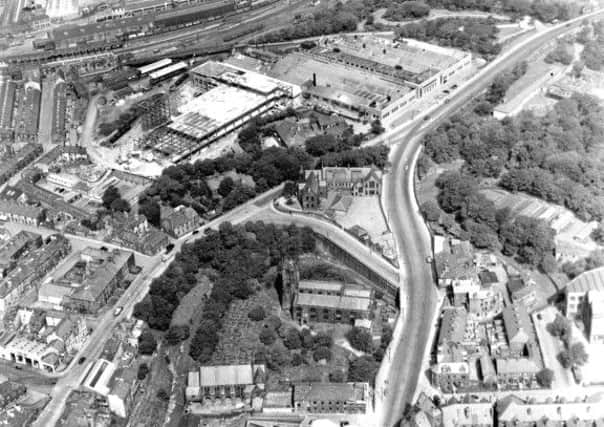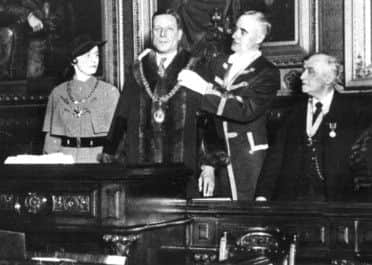How Prestige came to have a factory in Burnley


As Burnley’s wealth has been based on its manufacturing and industries, I have been most concerned with these, though I have pointed out that the town, which once had its own banks and building societies, has had an honourable history as a significant financial centre.
In addition, Burnley has had a large, but relatively low paid, service sector – considerably larger than the size of the town might otherwise have allowed.
Advertisement
Hide AdAdvertisement
Hide AdBurnley remains significant in the public sector though, with changes in health, education and other sectors of local government, there has been a decline in recent years.


Burnley succeeded in getting its first major investment from abroad in 1937 in the form of what was later known as the Prestige Group and this acquisition was a triumph for Burnley Council, the first of many over the years which have been achieved without significant party rancour.
The 1937 success was, in addition, a “World First” in that the Prestige factory in Colne Road was paid for without the intervention of central government. It was the local rates that made the scheme possible.
The factory was built on land owned by the council. It had formerly been known as Cronkshaw Meadow and had been gifted to the council in 1906 by Sir John O.S. Thursby for use as an approach road to the Bank Top (Central) railway station.
Advertisement
Hide AdAdvertisement
Hide AdThe initial plan also included the construction of “public pleasure grounds” but this scheme had to wait until 1910 before it was completed.
The pleasure grounds became known as Thursby Gardens and it was developed as a small park the main feature of which was the tennis courts of the Bank Hall Tennis Club.
However, the site was a superb one for the development of industry. It was on a good main road, not far from the town centre, but, more important, the site was adjacent to the goods yard of the town’s main railway station and the mineral railway which connected the mine at Bank Hall to the railway system.
There was opposition to the loss of part of the Gardens but, once the scheme was announced for the construction of the factory, this came to very little.
Advertisement
Hide AdAdvertisement
Hide AdThe three leading figures in the campaign to build the factory were the Mayor of Burnley for 1935-6, Coun. George Parkinson JP, Alderman Richard Broadley JP, who was Mayor, 1941-2 and Alderman John Lynch.
Mr Parkinson was Burnley born, an architect and surveyor, a founding member and principal of the firm of Lancaster, Son and Parkinson of Imperial Chambers, 2, Grimshaw Street, Burnley.
He was the driving force behind what became a very innovative scheme. Mr Broadley was the local secretary of the Transport and General Workers’ Union. He was described by the Daily Express as the supplier of solid considered judgement and was chairman of the council’s Finance Committee. Mr Lynch represented St Peter’s Ward from 1928 and to him was ascribed the financial guidance the project needed to be successful.
Mr Broadley was the first to be elected to the council. This was in 1921 but he served for only a year and was not re-elected until 1925 when he found a safe seat in St Paul’s Ward, in the town centre. Mr Parkinson was first elected, for Fulledge Ward, in October, 1924 and served in this seat in his mayoral year.
Advertisement
Hide AdAdvertisement
Hide AdThe men came from quite different backgrounds, Mr Parkinson, a Conservative, lived at “Glenesk”, a large house in Todmorden Road, and had a lovely cottage, which he used effectively in the employment campaign, in the country at Tunstall. Mr Broadley lived at 11 Hind Street, and Mr Lynch at 7 Killington Street but they, and almost the entire council, were united in their quest to get new sources of employment for the town.
As George Parkinson was Mayor for 1935-6 much of the story of what follows is taken from a book of newspaper cuttings, mainly connected with his mayoral year, which I have “borrowed” from the town hall.
It is clear the council’s strategy was to set up a small Development Sub-Committee which consisted of the three men already indicated. The sub-committee was given extensive powers to implement their plans which, in essence, were two-fold. The first was to acquire old, mostly abandoned, industrial buildings and entice new firms to occupy them once they were refurbished at council expense. Low rents – even peppercorn rents – were to be the main incentive for the new firms when they arrived.
The second part of the strategy was to build a new factory with the intention of attracting a large firm into the building.
Advertisement
Hide AdAdvertisement
Hide AdOver £90,000 was going to be needed for this project and a number of members of the council, including Coun. William Buchanan, were not convinced it was going to work.
This sum the sub-committee needed had to be borrowed, but the Government of the day had indicated borrowings on this scale could not take place in the financial climate then applying.
Success came soon with regard to the first part of the plan – to acquire redundant industrial property.
A firm of slipper makers from Rossendale established a factory in Burnley which was expected to employ 700. The firm was Lambert Haworth which soon had premises in Finsley Gate. Then there was a firm of handbag manufacturers, a firm of underwear makers (at Springfield Mill, one of the largest in Burnley), and a firm of uniform and clothing manufacturers. Soon these were joined by firms making furnishing fabrics, hats and berets, shoes and leather goods.
Advertisement
Hide AdAdvertisement
Hide AdBut the “gold standard” (and I use that phrase advisedly) was to be the new factory. The £90,000 loan was made available, the land cleared at Thursby Gardens and building work commenced before a tenant had been signed up. This was the cause of some concern but of greater concern was the Government’s refusal to co-operate over the building of the factory.
The Government even made it clear Burnley councillors could be made personally liable for any losses the scheme might incur. In addition, prison was threatened but the council, aware that over 60 mills were closed and at least 10,000 unemployed, especially the young, did not give in. A tenant was found and Plater’s and Stampers, later to be known as the Prestige Group, moved in.
George Parkinson addressed a meeting of Burnley Rotary Club at some point in his mayoralty. He announced an American hardware company was coming to Burnley and that, soon, the town might become known as “Little Sheffield”.
He outlined what the Development Sub-Committee had done so far. They had started by suggesting infra-structure work but had come to the conclusion this would not bring long-term jobs. I feel sure that, had they been consulted, they would have advised against HS2 unless the locomotives, carriages and rails were made in Britain, or, better still, Burnley!
Advertisement
Hide AdAdvertisement
Hide AdThey had sent out over 200,000 letters mainly to firms abroad. A brochure was produced which explained the advantages of firms expanding their business by investing in Burnley. The skills of Burnley people were detailed and the result was that Platers and Stampers signed up and came to town, the factory opening in 1937. Incidentally, the Council Year Book for 1951 makes no mention of the opening of 1937, the only event listed for 1937 being the visit of the Duke of Gloucester to inspect Burnley Lads’ Club at Keighley Green!
Burnley’s relative silence about the achievement at Platers and Stampers might seem odd but the important thing was that the arrival of the firm meant there were potentially 2,000 jobs for Burnley men and women to be had. The satisfaction, regarding the capture of the firm, was enough for most of the participants who had not only proved their critics, both local and national, wrong, but they had also devised the template for industrial regeneration and development for the immediate future.
This is something about which Burnley should be particularly proud, an old cotton town showing “them” how to do it!
George Parkinson has been credited with being mostly responsible for the success of the Development Sub-Committee. He used his position as Mayor, and his personal wealth, for the benefit of the town he loved. He often said he could not imagine what it was like for those who had no work and blamed his colleagues on the council, and himself, for not acting quickly enough to diversify local industry.
Advertisement
Hide AdAdvertisement
Hide AdIt has been estimated he brought some 5,000 jobs to Burnley at a time when they were needed most. More than that, he changed the world’s perception of the old cotton town into one where the skills of its people could be used in other industries. He laid the employment foundation of post-war Burnley which, on the back of the success of Prestige, and later the Lucas Group, was able to attract other firms like Belling’s, Michelin and Mullard’s.
However, at least one word of caution should be mentioned. A successful local economy cannot be built on merely industrial foundations, important as they may be. What is required is a mixed local economy giving a significant role to both the service and public sectors. In the time of Mr Parkinson, Mr Broadley and Mr Lynch, in their desperation for jobs, this was not fully appreciated.
Burnley still lacks the kind of service sector that can make a proper contribution to the local economy.
Jobs in call centres are better than nothing but, while the more profitable parts of the service sector are restricted to London and the bigger cities, towns like Burnley will continue to suffer.